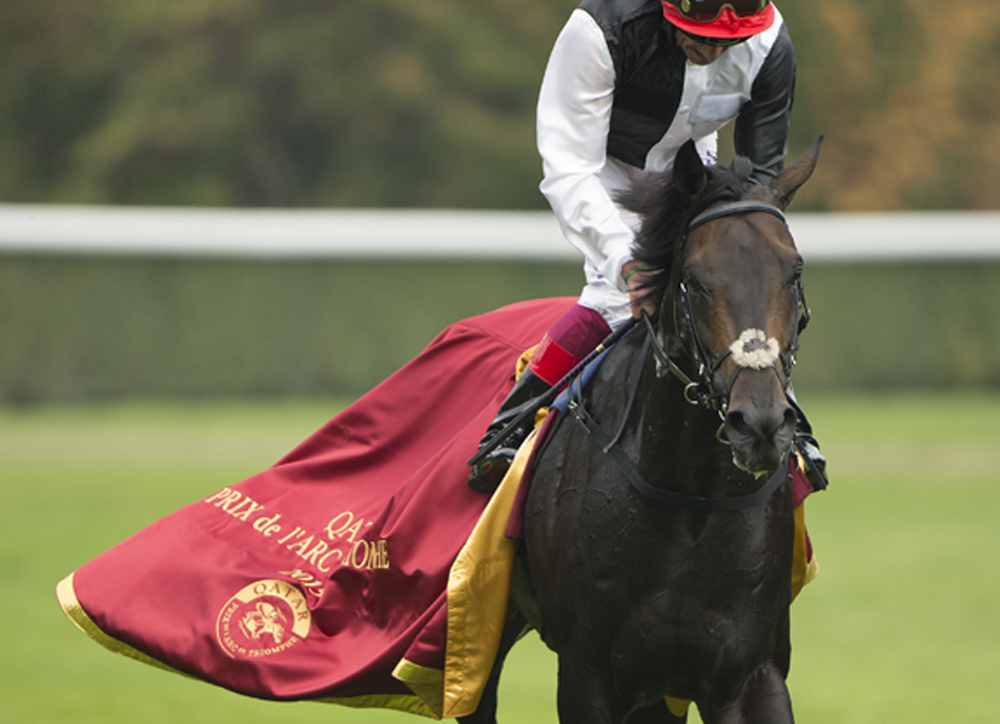By James Willoughby
Not everyone has the appetite to plough through the mountain of data produced by this week's annual publication of the Longines World's Best Racehorse Rankings. After 12 hours in my bunker, here are five takeaways which summarise some of my views on the numbers:
1). The G1 Dubai World Cup ranks only 33-equal among the world's Grade/Group 1 races over the last three years, behind the same meeting's Dubai Sheema Classic (15) and Dubai Turf (28=).
This is nothing short of a debacle and a pitiful return for the $10 million purse. In 2013, Animal Kingdom (Leroidesanimaux {Brz}) did something for the profile of the race, but since 2009 the winners apart have been nonentities as far as international celebrity is concerned. The return to a U.S.-style dirt surface in 2015 attracted GI Kentucky Derby winner California Chrome (Lucky Pulpit)–who returns this year–but the winner, Prince Bishop (Ire) (Dubawi {Ire}) is far below the standard which Sheikh Mohammed conceived for the race back in 1996.
2). Australia staged more races (23) among the World's Top 100 G1 races than any other country.
No surprise to see one of the world's most progressive racing nations consolidate its position in this regard, though it is slightly flattering because the concentration of its events is in the second half of this bracket. Still, Australia remains the home of the world's best sprint races, with the Darley T J Smith over 1200 meters at Randwick coming out top over the last three years. The Melbourne Cup doesn't make the list, owing to the fact that it is a handicap.
3). The Breeders' Cup Classic ranks second in the world's Top 100 Grade/Group 1s behind the Prix de l'Arc de Triomphe, but the next all-aged dirt race in the rankings is the Whitney H. at Saratoga at 31.
Turf remains the premier surface for global Thoroughbred racing, which is one of the problems for the Dubai World Cup and its ill-conceived switch from Tapeta. In my view, dirt racing holds considerable appeal because it is the antithesis of turf for many reasons. Dirt racing promotes an attritional style which isn't to everyone's taste, particularly when kickback is bad, but there is no doubt it distills the element of courage in the Thoroughbred more noticeably than grass or the so-called all-weather surfaces of the Polytrack family.
4). American Pharoah (Pioneerof the Nile) and Golden Horn (Ire) (Cape Cross {Ire}) were the World Champions on dirt and turf, respectively, with the former earning the World's Best Racehorse mantle by 134 to 131.
No surprise here then, and the predictability of this and many of the other ratings lessens the impact of the rankings, formerly known as the International Classifications. In a previous, benighted era, these numbers had more impact. Perhaps the world had more time to ponder these things, but in the computer age anyone with an interest in figures is well served on a daily basis. And it is highly doubtful whether the way the rankings are packaged makes them capable of penetrating racing fans indifferent to handicapping, particularly months after the event.
Here's the problem: given that official handicapping still emphasises human subjectivity over pure computation, what can the figures tell us that we haven't really decided for ourselves? Ancient civilisations devised numerical methods to understand things which defied empiricism, not to merely put numbers to existing opinions. We reached the point where computers can easily do the millions of computations involved in handicapping far better than humans, using recursion and error-minimisation techniques. Computation has the capacity to tell us things about horse racing around the world we don't already know.
5). The 11-length G1 Irish St Leger winner Order of St George (Ire) (Galileo {Ire}) was rated 124 while G1 Champion Sprint, G1 Maurice de Gheest, G1 July Cup and G1 Commonwealth Cup winner Muhaarar (GB) (Oasis Dream {GB}) was rated 123.
Along with many others, I stopped thinking that there was any point picking out differences of opinion with the figures while Admiral Rous was still around, but some comparison between horses highlights recurrent problems.
In many cases, summarising the racing merit of a horse by means of one figure is about as meaningful as assessing a great composer by one piece of music. Order of St George is almost certainly a top horse–that's not the point–but a sole wide-margin defeat of a talent-challenged subculture of horses wouldn't really compare with Muhaarar's four wins gained on the edge of Thoroughbred physical capabilities in competitive sprints.
Again, ratings and handicappers are not to blame–unless they allow themselves to become mired in subjective argument in which figures are used as some sort of imprimatur of greater sophistication.
One of the other big problems of the pseudoscience of handicapping is that no confidence intervals (as in 123 +/-2lb) are stated in general, discussed or even officially estimated, one suspects, so that handicappers can occasionally be heard saying things like “we thought long and hard before rating him a pound above his chief rival”, as if a difference of even two pounds isn't readily consumed by the combination of measurement error (the vagaries of the racecourse) and estimation error (the mechanics of handicapping, with a presupposed exchange between pounds and distance beaten).
Not a subscriber? Click here to sign up for the daily PDF or alerts.







